In the news: The Julian Bond Papers
American civil rights leader Julian Bond was known for many things. In 1960 he helped found the Student Nonviolent Coordinating Committee and spent the next decade organizing student protests and voter registration drives across the South. He served in the Georgia legislature, co-founded the Southern Poverty Law Center, and eventually led the National Association for the Advancement of Colored People. He also taught history at the University of Virginia from 1990 to 2012, leaving his papers to UVA’s Albert and Shirley Small Special Collections Library.
The Julian Bond Papers contain approximately 47,000 items, including speeches and articles written by Bond, correspondence, campaign materials, academic evaluations, and family papers. Bond donated his papers to the UVA Library in 2005 (he died in 2015). This past month, the collection made the news for different reasons.
UVA Today recently covered an ongoing effort of the Carter G. Woodson Institute for African American and African Studies and the Center for Digital Editing. The Julian Bond Papers Project is working to digitize, transcribe, and annotate Bond’s papers and make them freely available to the public. The team has already transcribed more than 10,000 pages, digitized close to 13,000 images, and celebrated its public launch on Feb. 22. “We noticed that the topics he engaged in the speeches — many of them written in the ’70s and ’80s — remain pressing to this very day,” said project director Deborah E. McDowell, a Woodson Institute professor and Alice Griffin Professor of English. Read more about this project, which has made more than 100 of Bond’s speeches accessible online.
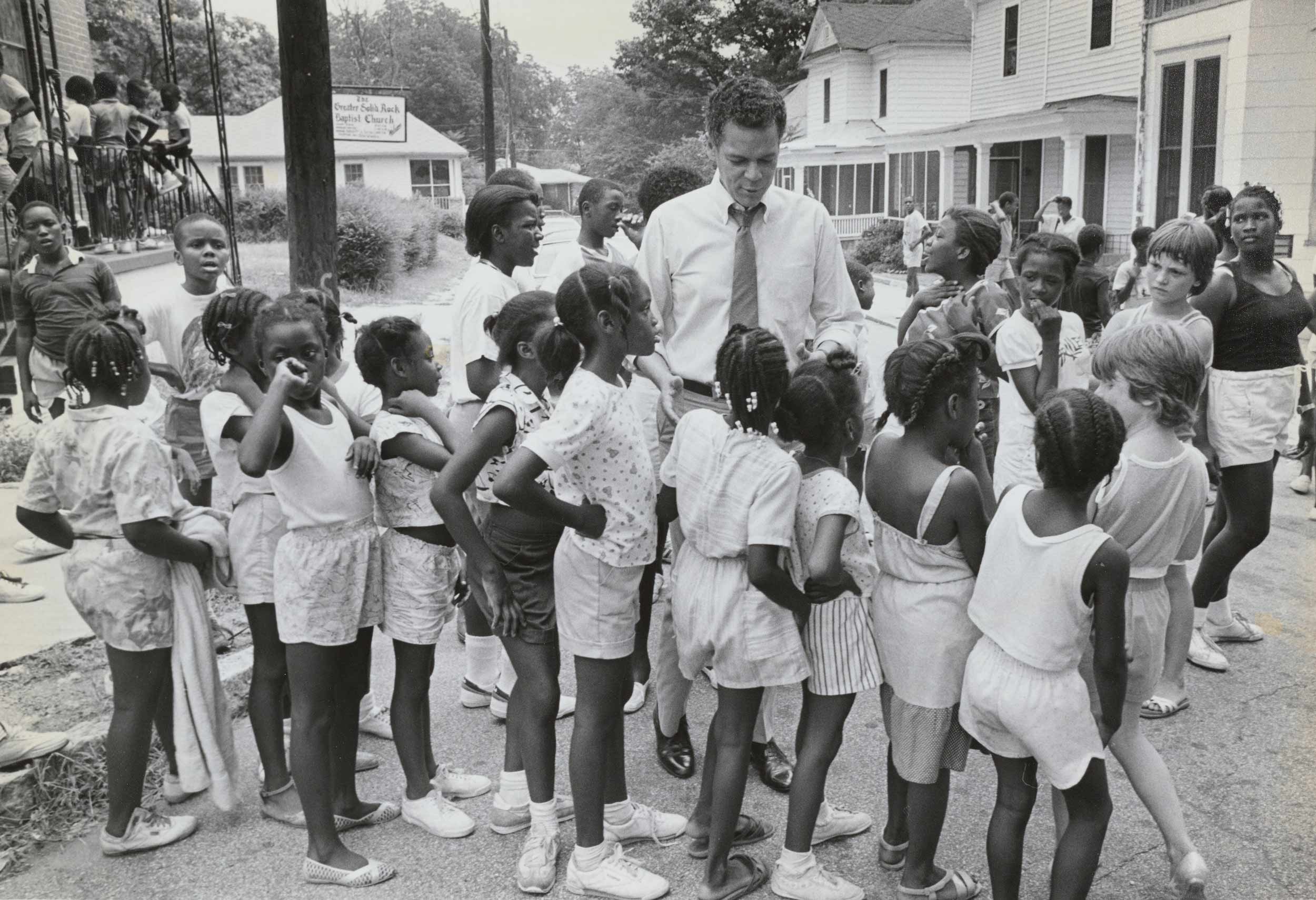
Over on Notes from Under Grounds, the blog of the Small Special Collections Library, scholar and book artist Derrais Carter dug into Julian Bond’s papers as part of a larger research project on blaxploitation cinema. A William A. Elwood Civil Rights and African American Studies Fellow, Carter spent days “wading through” Bond’s papers and came to the conclusion that Bond was “an unexpected vector in the 1970s Black popular culture landscape.” To read about Bond’s musical tastes (Melba Moore, Billie Holiday, Bessie Smith) and his 1977 Saturday Night Live hosting gig, check out Carter’s post.
To explore the Julian Bond Papers in person, plan a visit to the Small Special Collections Library.
“Images of ‘Black life, Black joy,’ are immortalized in historic Charlottesville portraits” – from PBS NewsHour
A recent story from PBS NewsHour featuring the Library’s “Visions of Progress” exhibition, as well as the Memorial to Enslaved Laborers and other recent work at UVA, begins:
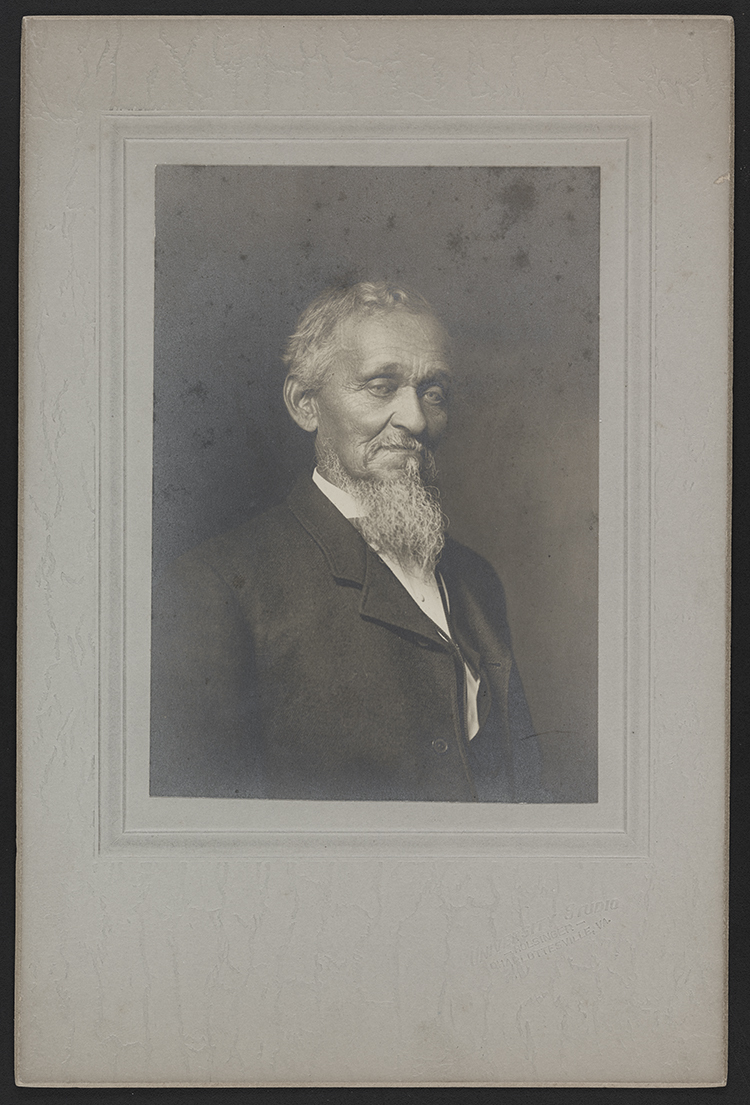
In the middle of the University of Virginia sits a portrait of a man with piercing eyes and a serious countenance, and a story that has long survived its main character. That man is Henry Martin.
The story goes on to tell of Martin’s impeccable reputation, even as descriptions of him were presented in a patronizing manner — as a mere faithful servant to the University.
The “Visions of Progress” exhibition features Henry Martin, larger than life, and many others who were photographed in the Holsinger studio in the late 19th and early 20th centuries.
John Edwin Mason, chief curator of the exhibition, says:
“The university has not always been a good neighbor to the African American community. … We’ve learned a lot about Charlottesville, its history and the hard side of history. We’ve learned about oppression. We have not learned about Black life, Black joy, Black family, Black churches, Black schools, Black politics, Black style. All of those things have been in the background. And through these portraits, we’re bringing them into the foreground.”
Read the full story or watch the video from PBS NewsHour.
The “Visions of Progress” exhibition remains on view in Harrison/Small during regular hours of operation until June.


Celebrating Fair Use Week 2023!

Every year around this time, libraries, archives, and allied institutions and groups celebrate Fair Use Week, a time to recognize the power and importance of the fair use doctrine in our daily lives. Fair use is the First Amendment safety valve in copyright law, allowing use of in-copyright works without payment or permission when the use serves copyright’s purpose without intruding unfairly on the copyright holder’s commercial prerogatives.
This year we have two features from the University of Virginia Library’s Director of Information Policy, Brandon Butler:
First, a piece cross-posted with Harvard University about copyright (and, specifically, fair use) and its application in cases of artificial intelligence such as ChatGPT and Stable Diffusion.
Second, and in a totally different realm of human interests, Butler made a guest appearance on “Just Wanna Quilt,” a podcast hosted by quilter and copyright scholar Elizabeth Townsend Gard.
Listen: “Attorney Brandon Butler talks about copyright and fair use”
If you want more on this topic, there’s a substantial collection of essays and articles on the Fair Use Week site, covering topics like fair use myths, the recent Andy Warhol case, and copyright in libraries.
You can also visit The Taper for more Fair Use Week reflections or the Library’s Fair Use page for a brief video and further resources on this subject.
Thanks to Brandon Butler, Director of Information Policy, for assistance on this piece.
Behind serpentine walls: Centering enslaved laborers at UVA
This story was originally published as part of the 2021 Annual Report.

In spring of 2020 the Library added to the University’s store of knowledge about the enslaved African Americans who performed work vital to the functioning of UVA in the 19th century. Joining with UVA Landscape Architect Mary Hughes, Chief of Staff of the Division for Diversity, Equity, and Inclusion Meghan Faulkner, and Assistant Dean and History Professor Kirt von Daacke, a team from the Library conducted research, contributed text, and provided rare images from Special Collections to create a new virtual tour as part of the Walking Tours of Grounds app. The new tour, “Enslaved African Americans at the University of Virginia,” updates a print brochure published earlier by the President’s Commission on Slavery and the University.
The app is part of President Jim Ryan’s initiative to add context to the story of UVA’s past by emphasizing the contributions to University life made by enslaved people. According to team leader Elyse Girard, Executive Director of Library Communications and User Experience, “Access was really at the heart of the creation of this digital tour.” Anyone with internet can use the tour for a view into the world of the enslaved laborers and artisans who excavated the terraced contours of the Lawn in 1817 and literally built the University, laying many thousands of bricks made of clay which they dug from the earth and then molded and fire-hardened in kilns. Viewers can also see how people who were rented to hotelkeepers as property rose from their quarters in basements and outbuildings before daylight every morning to haul water, lay fires, and prepare meals for faculty and students, in many cases laboring behind the high serpentine walls that were constructed to conceal their presence.
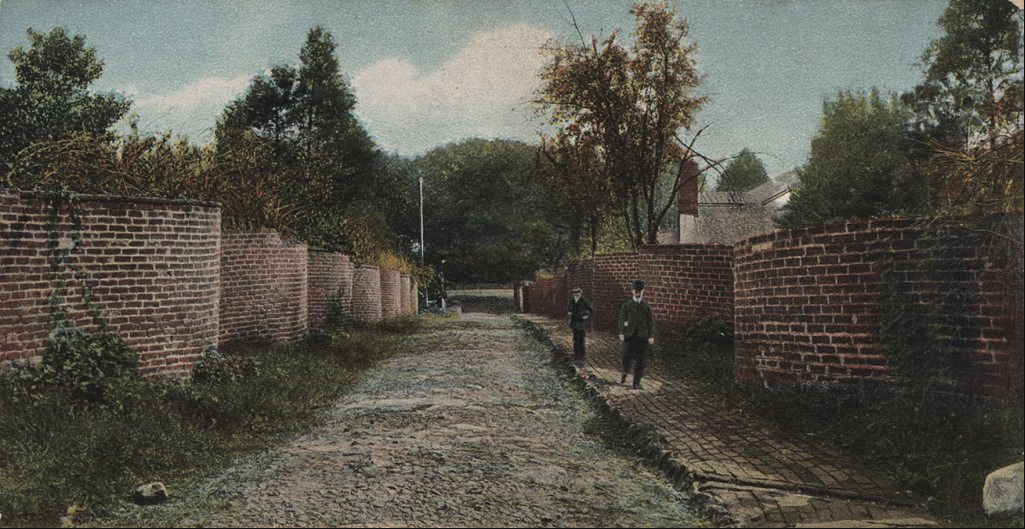
Only 600 names of UVA’s estimated 4,000 enslaved workers are currently known. Among them are husband and wife William and Isabella Gibbons who were divided by enslavement to serve professors in separate households. William Gibbons, a butler, taught himself to read by “observing and listening” to white students. His was a quiet resistance to prohibitions against educating enslaved people. Isabella Gibbons, a domestic servant, likewise risked punishment by teaching their daughter in secret. UVA residence hall Gibbons House is named in their honor.
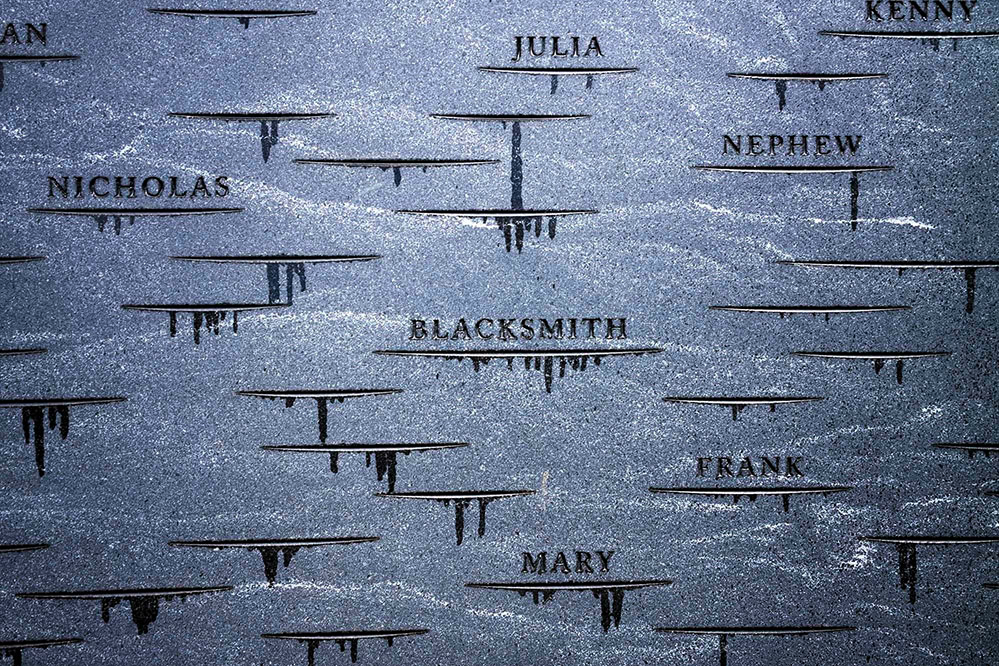
Free people of color also resisted the social path that whites had mapped out for them. In 1833, seamstress Catherine “Kitty” Foster purchased a little more than two acres which became part of an African American neighborhood known as Canada. An aluminum frame has been erected which casts a shadow tracing the foundation of her house, recovering an idea of the physical space in which people of color lived and worked.
The tour includes a stop at the newly dedicated Memorial to Enslaved Laborers, where hundreds of names of the enslaved at UVA are engraved into the memorial’s innermost ring. Names of enslaved laborers still unknown are represented by slashes etched into the granite of the memorial. Research is ongoing to identify the many individuals not yet recognized, and these “memory marks” serve as placeholders in hopes that the missing names will one day be added.
Inaugural “STEM for Everyone” lecture searches for extraterrestrial life

The Milky Way Galaxy seen over the Karl G. Jansky Very Large Array west of Socorro, New Mexico. (NRAO/AUI/NSF, Jeff Hellerman)
The U.S. military has shot down four aerial objects in recent weeks, most recently an unidentified object over Lake Huron on Sunday. As more attention is being paid to the skies in the wake of these events (as well as after a government report on unidentified aerial phenomena was released in 2021), it might not be considered too “out there” to speculate about the possibility of extraterrestrial life.
“I think it is always worthwhile to study things we don’t understand. That is how we make progress toward understanding the universe we live in,” said University of Virginia astronomy professor Kelsey Johnson in a 2021 interview with UVA Today. Johnson is the inaugural speaker in a new popular science lecture series, “STEM for Everyone,” funded by the Charles L. Brown Endowment.
Johnson’s three lectures in the series center on the theme of “Unsolved Mysteries of the Universe.” Her first talk, “Is There Extraterrestrial Life?” will be held on Monday, Feb. 27, from 6-7 p.m. in the Charles L. Brown Science and Engineering Library, Room 133. Johnson’s next lectures in March and April will explore what happens inside black holes and what caused the Big Bang.
“Science is all about curiosity, and thinking about extraterrestrial life is rich ground for asking a huge range of questions,” Johnson said. “I absolutely love talking about and teaching these questions as a hook for inquiry — what forms might extraterrestrial life take? What environments might they need to live? How would they communicate? Would they even want to communicate? Considering these questions also gives us insight into ourselves and our own place in the universe.”
The “STEM for Everyone” lectures are designed for a general undergraduate audience and are open to the public. Refreshments will be provided, and there will be a small reception at the end of the talk. There will also be a prize drawing for attendees (prizes include a signed edition of Johnson’s book, “Constellations for Kids,” which is listed consistently in Amazon’s top 10 children’s astronomy books, as well as a signed art print by Johnson).
Johnson is president of the American Astronomical Society and founding director of the award-winning Dark Skies Bright Kids program. Her TED talk on the importance of dark skies has more than 2 million views and her writing has appeared in the New York Times, Washington Post, and Scientific American. In the video below, she explains what pulls her towards investigating the unsolved mysteries of the universe with her students.
Staff prepare for book move as renovation nears end
The reopening of the new main library, Alderman, is just under a year away, but Beth Blanton, Director of Collections, is already deep in the process of mapping the book move into the new space. “I realized I have more than 50 spreadsheets — I stopped counting — keeping track of the collections in the book move,” she said, reflecting on a process that directly involves more than a dozen Library staff members and will touch more than a million printed books.
The process involves a complex “staging” that starts at Ivy Stacks, where most of the books are currently shelved. Since items in Ivy Stacks are sorted by size to allow for maximum efficiency in shelving, they need to be fully reorganized and merged into a browsable order before returning to their shelf locations in Alderman and Clemons.
The original move to Ivy Stacks in 2019 followed a significant expansion of shelving capacity in Clemons Library, which was conducted to ensure browsing access to high-demand items during the renovation. A large collection will remain available in Clemons, even after Alderman reopens in early 2024.
Brenda Loewen, Senior Project Manager, has been close to the inner workings of the renovation project since coming on board in late 2019. Reflecting on the move-out process that took place just before the start of the pandemic, Loewen remarked that it “was an incredible effort,” partly because “the construction manager and the design team were champing, you know, just literally biting at our heels because they were ready to start cordoning off areas to begin demolition.” She adds that the pandemic “forced everybody to get out of the library sooner rather than later.”
Returning to a similar task now, three years later, brings the project full circle. In preparation for physical moves, the Collections team is analyzing use patterns, looking at duplications between physical books and e-books, and making plans for final placement. They’re also shaping an RFP for a vendor to help execute the move itself, which will involve using a cherry picker to remove the books from the 30-foot-high Ivy Stacks shelves, staging them in call number order in an interim area, and finally arranging them correctly in the new space, with heavy oversight from the Library’s Collections team. “Most people just can’t envision what [moving] a million-plus books looks like,” Blanton observed. “We have to be concerned about accuracy of arrangement when they go back on the shelf, getting it done quickly so that folks will have access to the collection as quickly as possible, and quality control throughout the entire process.”
Using the move-out in 2019 as a model and also as a learning opportunity, this project will remain an all-hands effort, relying on expertise from all parts of the Library before its completion. “We recognize the expertise of all our colleagues and know that we’re going to be calling on most everyone in the Library at some point or another to share what they know with us. So these folks represent liaisons, public services, metadata or cataloging, as well as [the back-end systems design],” Blanton said.
The true test will begin one year from now, when a certificate of occupancy is anticipated for the new library building, allowing for the book move to begin. Desks, equipment, and humans will follow, with public access anticipated in early 2024. Until then, in spreadsheets — and in our Library staffers’ unrelenting dedication — we trust.
This story originally appeared in the Library’s Annual Report for FY 2022-23. Download the full PDF to read more.
Just in time for Valentine’s Day: It’s Love Data Week!
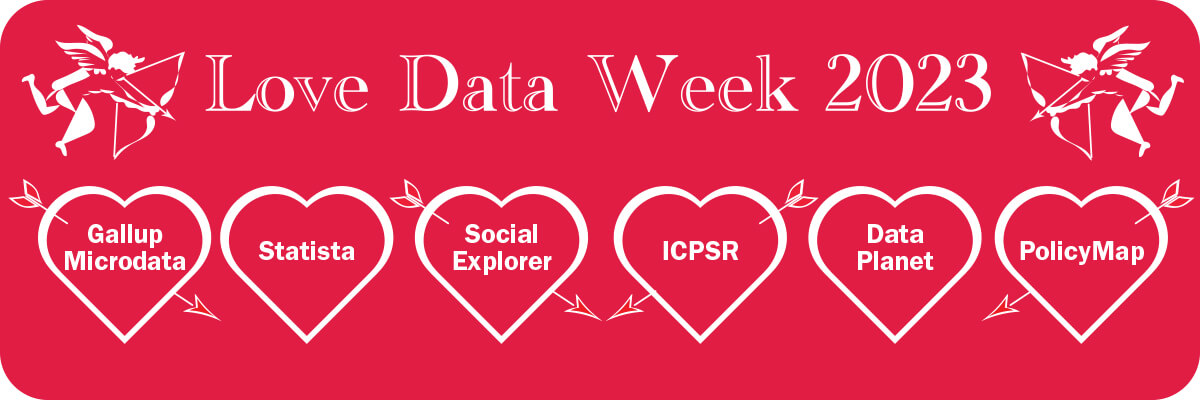
In his “Sonnet 116” William Shakespeare describes what he sees as the truest kind of love — the marriage of two minds.
“Love is not love
Which alters when it alteration finds,
Or bends with the remover to remove:
O no! it is an ever-fixed mark
That looks on tempests and is never shaken.”
Here at the University of Virginia Library, we are celebrating another kind of “ever-fixed mark” amid this time of chocolates and flowers: data! Every year around Valentine’s Day, the Inter-university Consortium for Political and Social Research leads Love Data Week, a weeklong celebration of data and its uses. This year’s theme is “Data: Agent of Change.”
With that theme in mind, we are highlighting data collections that might inspire users to bring about important change, whether political, environmental, or social. Jenn Huck, Associate Director of Research Data Services, manages our data collections and helps people find and use data and statistics. We asked her to share her favorite data collections held by the UVA Library. Take a look below.
PolicyMap
PolicyMap includes data relevant to policymaking, like demographics, incomes and spending, housing, health, and quality of life. Use it for research, impact planning, site selection, and more. I love the map-making capabilities as well — it is really easy to use and does not require geographic information systems skills to make beautiful, informative maps for local communities. Below, check out a map about affordable housing in Charlottesville that I quickly made in PolicyMap.
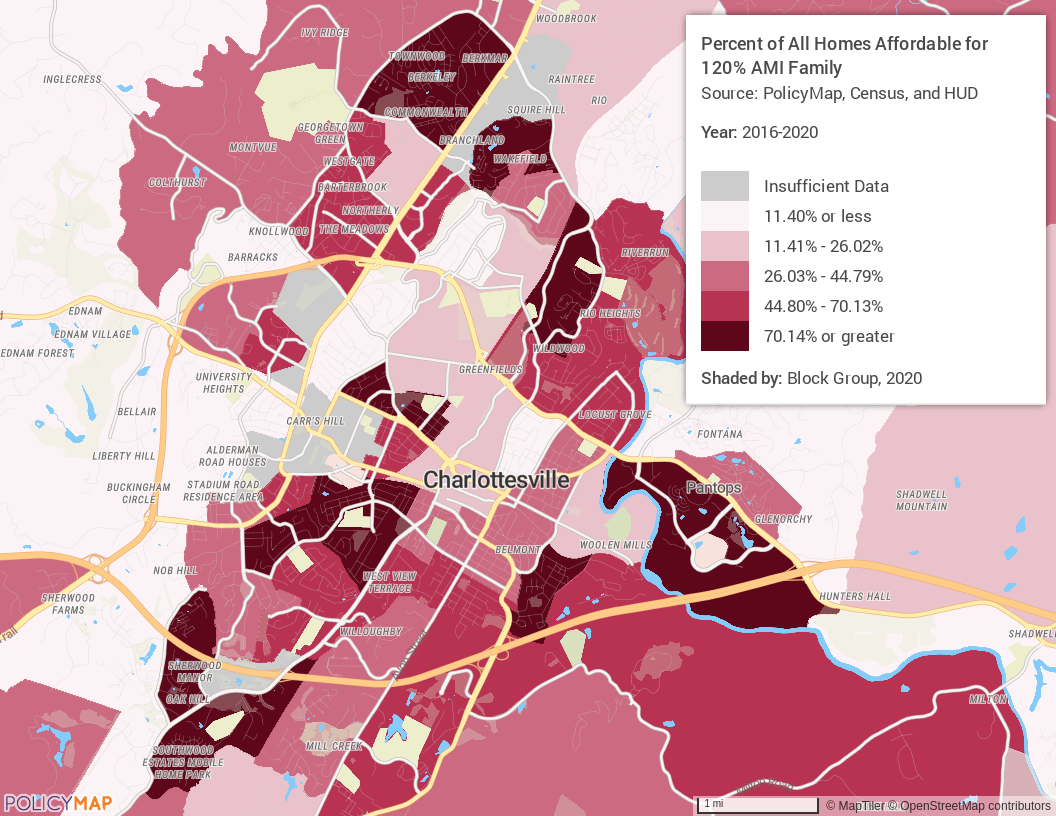
Data Planet Statistical Datasets
Data Planet is a great place to find a wide variety of statistical datasets. Most of the datasets are from publicly available, often governmental sources, but UVA Library also provides special access to a few business- and marketing-related datasets. Data Planet is easy to search, and I like that you can combine different tables in one graph.
Social Explorer
If you have ever tried to extract census data from the U.S. Census Bureau website, you know that it can sometimes be tricky, and may not have the historical data you need. Social Explorer is great because it has an easy-to-use interface that simplifies selecting data based on geography, topic, and years (including historical data!). Social Explorer isn’t just about the census, although that is its most popular use. It also has school, housing, crime, agricultural data, and more. I also like that it is easy to export data out of the platform.
Gallup Microdata
Gallup surveys people all over the world about a wide variety of topics, including politics, health, safety, and well-being. This is a unique source because Gallup asks the same questions the same way year after year in countries around the world. This is beneficial because you can compare groups of people over time or across different countries.
ICPSR
Inter-university Consortium for Political and Social Research (ICPSR) is one of the oldest and largest social science repositories. They were formed in 1962! As institutional members, UVA affiliates get access to the extremely well-curated datasets in the repository. ICPSR files are a joy to use because the documentation is so well done — you always know what you are getting for each data file.
Statista
Statista’s main benefit is providing charts and statistics about business and consumer topics that are easily embedded into your work (with proper attribution, of course). They also provide excellent reports on trending topics, like markets, brands, and politics.
When helping people find data, one strategy I use is exploring these platforms to see what kind of data might exist in the world. These platforms are really easy to search, and the best part is that they always cite their sources. Sometimes I will use a platform like Statista, PolicyMap, or Data-Planet to search for data, figure out what exists, then I might go directly to the source in the data citation to learn even more.
If you have any questions about these platforms, finding data, or are interested in data literacy instruction in your classroom, reach out to Jenn Huck at data@virginia.edu. Need help analyzing the data you already have? Reach out to StatLab at statlab@virginia.edu for one-on-one consults and walk-in office hours.
Recommended reels & reads this Black History Month 2023
Librarian for African American and African Studies Katrina Spencer presents film and book pairings from the UVA catalog and beyond in celebration of Black History Month 2023. Spencer takes a wide, diasporic view, highlighting actors, writers, and creators from the United States, Brazil, South Africa, and Guyana. You are warmly encouraged to explore additional films through our streaming film holdings on Kanopy, Projectr, and our resource guide managed by Media Collections Librarian Leigh Rockey. For more recommendations, also see our posts commemorating Black History Month 2022 and Black History Month 2021.
An incredibly vibrant and richly colored four-part documentary found on Netflix, “High on the Hog: How 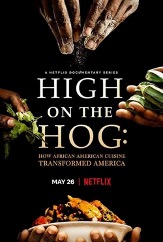 African American Cuisine Transformed America” traces the connections and foodways of the transatlantic Black diaspora. “High on the hog” is an idiomatic phrase that refers to a luxurious lifestyle and the series shows the ways in which multiple generations of Black peoples created delicacy and sophisticated cuisine in the midst of bounty on the West African coastlines and scarcity in times of forced servitude and political oppression. Hosted by Stephen Satterfield and inspired by food historian Jessica B. Harris’ life’s work, the series starts in Benin with food staples such as okra, yams, and peanuts. It visits South Carolina and its unique cultivation of rice. It arrives in Charlottesville and highlights the French-trained enslaved chef, James Hemings, of Thomas Jefferson’s of Monticello. (This episode also features public historian and UVA alumna Niya Bates.) The series then peers at oyster shucking up north in New York. Barbecue, cookouts, and Black cowboys also make appearances. The work is a worthwhile watch for its stimulating visuals alone, but the history lessons are sure to enlighten as well. “High on the Hog” proves that Black history is American history.
African American Cuisine Transformed America” traces the connections and foodways of the transatlantic Black diaspora. “High on the hog” is an idiomatic phrase that refers to a luxurious lifestyle and the series shows the ways in which multiple generations of Black peoples created delicacy and sophisticated cuisine in the midst of bounty on the West African coastlines and scarcity in times of forced servitude and political oppression. Hosted by Stephen Satterfield and inspired by food historian Jessica B. Harris’ life’s work, the series starts in Benin with food staples such as okra, yams, and peanuts. It visits South Carolina and its unique cultivation of rice. It arrives in Charlottesville and highlights the French-trained enslaved chef, James Hemings, of Thomas Jefferson’s of Monticello. (This episode also features public historian and UVA alumna Niya Bates.) The series then peers at oyster shucking up north in New York. Barbecue, cookouts, and Black cowboys also make appearances. The work is a worthwhile watch for its stimulating visuals alone, but the history lessons are sure to enlighten as well. “High on the Hog” proves that Black history is American history.
I’d readily pair Satterfield’s work with “Black Food: Stories, Art, & Recipes From Across the African 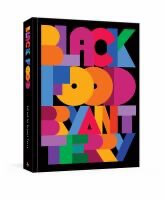 Diaspora.” Critics can’t seem to say enough good things about “Black Food,” a colorful anthology of food histories, memoirs, and recipes collected by food savant, author, and publisher Bryant Terry. With more than three dozen recipes — sweet, savory, pungent, spicy, and the like — the anthology delivers a cascade of mesmerizing flavors including something for every palate. For a classic soul food dish, see “Collards” on page 157. For an innovative dish, see the “Black Eyed Pea & Charred Octopus Salad” on page 163. Anyone will tell you that “Black Food” is much more than a cookbook. Terry’s vision is one of color, breadth, and inclusion, and he welcomes a broad swath of voices, among them author Toni Morrison’s, rest advocate Tricia Hersey’s, and peer chef Pierre Thiam’s to comment on their experiences and histories in creating nourishment for the body and soul. Among the many accomplishments of this work is the fact that more than half of the recipes included are either vegetarian or vegan — not a simple undertaking in a society that collectively practices mass meat consumption. Perhaps the lone frustration associated with this tome is not being able to move through the many culinary challenges quickly enough!
Diaspora.” Critics can’t seem to say enough good things about “Black Food,” a colorful anthology of food histories, memoirs, and recipes collected by food savant, author, and publisher Bryant Terry. With more than three dozen recipes — sweet, savory, pungent, spicy, and the like — the anthology delivers a cascade of mesmerizing flavors including something for every palate. For a classic soul food dish, see “Collards” on page 157. For an innovative dish, see the “Black Eyed Pea & Charred Octopus Salad” on page 163. Anyone will tell you that “Black Food” is much more than a cookbook. Terry’s vision is one of color, breadth, and inclusion, and he welcomes a broad swath of voices, among them author Toni Morrison’s, rest advocate Tricia Hersey’s, and peer chef Pierre Thiam’s to comment on their experiences and histories in creating nourishment for the body and soul. Among the many accomplishments of this work is the fact that more than half of the recipes included are either vegetarian or vegan — not a simple undertaking in a society that collectively practices mass meat consumption. Perhaps the lone frustration associated with this tome is not being able to move through the many culinary challenges quickly enough!
***
“Wash Day Diaries,” a graphic novel and quick read by Jamila Rowser and Robyn Smith, tells the stories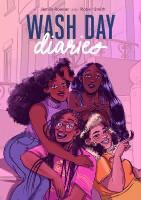 of four fictional but hyper realistic young Black women — Nisha, Kim, Cookie, and Davene — in New York City and the adventures they encounter attempting to live their best lives. As they move about the metropolitan space, they are faced with misogyny, intergenerational trauma, romantic “situationships,” and depression. Through it all, they care for each other— and their hair— showing a commitment to sisterhood and locks that slay. Again, the colors of this work, as in those listed above, are an endless feast for the eyes. Many readers will find themselves reflected on the pages, be it in the familiar toxicity of many a modern dating plain, the stifling expectations of familial elders, or the doldrums of managing one’s mental health. The thread of hair care is a recognizable cultural practice for Black women that allows the quartet of characters to show one tradition they share, and acts as an authoritative but unobtrusive driver for the narrative. Ultimately, the story is one of triumph against adversity via reliance on community bonds.
of four fictional but hyper realistic young Black women — Nisha, Kim, Cookie, and Davene — in New York City and the adventures they encounter attempting to live their best lives. As they move about the metropolitan space, they are faced with misogyny, intergenerational trauma, romantic “situationships,” and depression. Through it all, they care for each other— and their hair— showing a commitment to sisterhood and locks that slay. Again, the colors of this work, as in those listed above, are an endless feast for the eyes. Many readers will find themselves reflected on the pages, be it in the familiar toxicity of many a modern dating plain, the stifling expectations of familial elders, or the doldrums of managing one’s mental health. The thread of hair care is a recognizable cultural practice for Black women that allows the quartet of characters to show one tradition they share, and acts as an authoritative but unobtrusive driver for the narrative. Ultimately, the story is one of triumph against adversity via reliance on community bonds.
Rowser and Smith’s work belongs in conversation with Chris Rock’s 2009 documentary “Good Hair,” 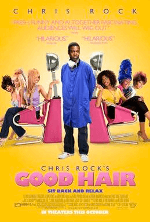 which prioritizes revealing not only the many dollars Black women put towards maintaining our hair, but the sacrifices and risks we take, too, with the same goal in mind. The term “good hair” within international Black communities refers to the adherence to a European beauty standard that suggests that kinky or curly hair is less beautiful and/or desirable than straight hair. This belief thrust upon the Black diaspora for centuries led to the straightening of our hair with hot combs, flat irons, and chemical relaxers, and the use of some wigs. The last 15 years have shown tremendous growth within the natural hair movement and made braids, twist outs, cornrows, and other natural styles more widespread than before. “Good Hair” largely examines the economics behind Black hair care, and while the tradition has seen a major shift since this film’s release, the documentary gives a great overview of a multibillion-dollar industry and the paramount practices of a long era.
which prioritizes revealing not only the many dollars Black women put towards maintaining our hair, but the sacrifices and risks we take, too, with the same goal in mind. The term “good hair” within international Black communities refers to the adherence to a European beauty standard that suggests that kinky or curly hair is less beautiful and/or desirable than straight hair. This belief thrust upon the Black diaspora for centuries led to the straightening of our hair with hot combs, flat irons, and chemical relaxers, and the use of some wigs. The last 15 years have shown tremendous growth within the natural hair movement and made braids, twist outs, cornrows, and other natural styles more widespread than before. “Good Hair” largely examines the economics behind Black hair care, and while the tradition has seen a major shift since this film’s release, the documentary gives a great overview of a multibillion-dollar industry and the paramount practices of a long era.
***
“Honk for Jesus. Save Your Soul,” directed by Adamma Ebo, was the best film I saw in 2022 — not that I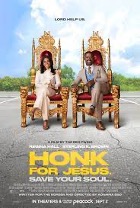 saw all that many. The pandemic, after all, changed our collective movie-going behavior for a few years. I’d call this one a satirical work that critiques commitment to the prosperity gospel narrative and any habit of sweeping scandal under the rug. A pastor named Lee-Curtis Childs and his wife Trinitie have a fall from grace in leading their church flock. The two hire a documentarian and camera crew to follow their rebirth and phoenix-like rise from the ashes. The film should have an even greater following, not only for its execution, but also for its high-profile leads, Regina Hall and Sterling K. Brown.
saw all that many. The pandemic, after all, changed our collective movie-going behavior for a few years. I’d call this one a satirical work that critiques commitment to the prosperity gospel narrative and any habit of sweeping scandal under the rug. A pastor named Lee-Curtis Childs and his wife Trinitie have a fall from grace in leading their church flock. The two hire a documentarian and camera crew to follow their rebirth and phoenix-like rise from the ashes. The film should have an even greater following, not only for its execution, but also for its high-profile leads, Regina Hall and Sterling K. Brown.
For those of us who grew up in the church, the film has an uncanny knack for shedding 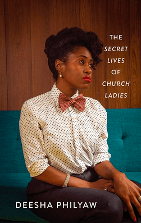 light on the places where the practice of faith can splinter. How much commitment should we give to organized religion when that same commitment is causing us pain? That question is the one that led me to pair “Honk for Jesus” with the short story collection “The Secret Lives of Church Ladies” by Deesha Philyaw. If any viewer or reader has been hurt by engagement with organized religion, these two works will help them foreground and explore some foundational frictions. Both works ask, “What happens when the prescribed path to salvation isn’t working? How much are we willing to cover up, repress, and ignore to be called holy, faithful, and sanctified?”
light on the places where the practice of faith can splinter. How much commitment should we give to organized religion when that same commitment is causing us pain? That question is the one that led me to pair “Honk for Jesus” with the short story collection “The Secret Lives of Church Ladies” by Deesha Philyaw. If any viewer or reader has been hurt by engagement with organized religion, these two works will help them foreground and explore some foundational frictions. Both works ask, “What happens when the prescribed path to salvation isn’t working? How much are we willing to cover up, repress, and ignore to be called holy, faithful, and sanctified?”
***
I was taking a Brazilian Portuguese class once a week with the local Speak! Language Center and my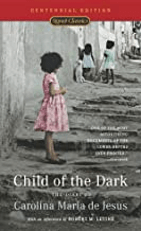 instructor told me about a memoir called “O quarto de despejo”/ “Child Of The Dark: The Diary Of Carolina Maria de Jesus,” translated by David St. Clair. Author Carolina Maria de Jesus, a Black Brazilian woman, lived in a community formerly known as a “favela” or slum in São Paulo, Brazil, in the mid- and late-1950s. Unlike many of her neighbors, she was able to read and write. And unlike many women in her community, she was unmarried by choice. De Jesus’ diary tells of daily life in an intimate community of impoverished people who are lacking basic amenities like indoor plumbing. These are people who know hunger and people who scrape by as “catadores,” workers who exchange discarded recyclable materials for money. After de Jesus’ work was “discovered” by a journalist, the book that followed would become an international success and de Jesus would be able to liberate herself from the slum.
instructor told me about a memoir called “O quarto de despejo”/ “Child Of The Dark: The Diary Of Carolina Maria de Jesus,” translated by David St. Clair. Author Carolina Maria de Jesus, a Black Brazilian woman, lived in a community formerly known as a “favela” or slum in São Paulo, Brazil, in the mid- and late-1950s. Unlike many of her neighbors, she was able to read and write. And unlike many women in her community, she was unmarried by choice. De Jesus’ diary tells of daily life in an intimate community of impoverished people who are lacking basic amenities like indoor plumbing. These are people who know hunger and people who scrape by as “catadores,” workers who exchange discarded recyclable materials for money. After de Jesus’ work was “discovered” by a journalist, the book that followed would become an international success and de Jesus would be able to liberate herself from the slum.
Before reading the work above, I decided to watch the documentary “Waste Land,” directed by Lucy 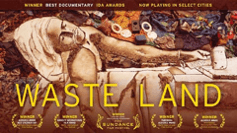 Walker, on Amazon Prime to learn more about the lives of catadores. In this film, viewers are transported to an active and dangerous landfill where Brazilians rifle through garbage in an effort to make a living. Brazilian artist Vik Muniz invites several catadores to participate in an unconventional project in which he recreated their portraits using the very materials reaped from the landfill. His avant-garde approach to bringing humanity to the workers is enough to merit the viewing of this film. Witnessing the growth of the participants’ self-esteem upon seeing themselves in a new light, however, is the true prize. Muniz’ auctioning of his artistic work brings greater funds and dignity to the marginalized workers, changing their outlooks forever.
Walker, on Amazon Prime to learn more about the lives of catadores. In this film, viewers are transported to an active and dangerous landfill where Brazilians rifle through garbage in an effort to make a living. Brazilian artist Vik Muniz invites several catadores to participate in an unconventional project in which he recreated their portraits using the very materials reaped from the landfill. His avant-garde approach to bringing humanity to the workers is enough to merit the viewing of this film. Witnessing the growth of the participants’ self-esteem upon seeing themselves in a new light, however, is the true prize. Muniz’ auctioning of his artistic work brings greater funds and dignity to the marginalized workers, changing their outlooks forever.
***
Styling my hair into single-strand twists, strands and fingertips covered in coconut oil and raw shea butter, takes a while. So I turn on something I can watch to get ’er done. In December, Netflix recommended Trevor Noah’s stand up special “I Wish You Would” to me as a 99% match, so I opted in. I’ve only seen clips of Noah’s late-night hosting of “The Daily Show” via YouTube, but one of the things I consistently appreciate is his intimate knowledge of three different continents: Africa, Europe, and North America. While fellow Afro-British comedian Gina Yashere shares some of this vantage point, too, this profile isn’t so common in the world of comedy, so there’s always something to learn from his humor. In this special, the commentary Noah makes about the international handling of the coronavirus pandemic was especially compelling. For centuries, the media has depicted African cultures as backward and lacking. Despite this representation, Noah points out that several African nations took the knowledge they had gained from preventing the spread of the Ebola virus and applied it, yielding winning results and challenging the notion of superior health practices being broadly prevalent only outside of Africa. Over the past seven years, this creator’s incisive wit has helped Western viewers expand their views of Africa and Africans, demonstrating that intelligence, wit, sarcasm, and social critique are alive and well in the Global South, too.
takes a while. So I turn on something I can watch to get ’er done. In December, Netflix recommended Trevor Noah’s stand up special “I Wish You Would” to me as a 99% match, so I opted in. I’ve only seen clips of Noah’s late-night hosting of “The Daily Show” via YouTube, but one of the things I consistently appreciate is his intimate knowledge of three different continents: Africa, Europe, and North America. While fellow Afro-British comedian Gina Yashere shares some of this vantage point, too, this profile isn’t so common in the world of comedy, so there’s always something to learn from his humor. In this special, the commentary Noah makes about the international handling of the coronavirus pandemic was especially compelling. For centuries, the media has depicted African cultures as backward and lacking. Despite this representation, Noah points out that several African nations took the knowledge they had gained from preventing the spread of the Ebola virus and applied it, yielding winning results and challenging the notion of superior health practices being broadly prevalent only outside of Africa. Over the past seven years, this creator’s incisive wit has helped Western viewers expand their views of Africa and Africans, demonstrating that intelligence, wit, sarcasm, and social critique are alive and well in the Global South, too.
Another creator who labored in an effort to shed light on the interactions between continents was 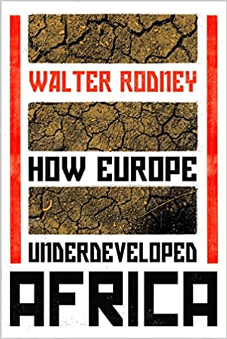 Guyanese historian Walter Rodney, author of the earth-shattering work “How Europe Underdeveloped Africa.” Rodney’s work highlights a historical phenomenon of Europe treating Africa as a source for endless extraction, which has long crippled African economies and labor forces, while building, expanding, and sustaining European ones. Anyone getting their feet wet in the history of Africa will be helped by learning about the Berlin Conference of 1884-1885 and Rodney’s work, which includes an examination of the historic event and contextualizes enduring disparities we see amongst major global entities today.
Guyanese historian Walter Rodney, author of the earth-shattering work “How Europe Underdeveloped Africa.” Rodney’s work highlights a historical phenomenon of Europe treating Africa as a source for endless extraction, which has long crippled African economies and labor forces, while building, expanding, and sustaining European ones. Anyone getting their feet wet in the history of Africa will be helped by learning about the Berlin Conference of 1884-1885 and Rodney’s work, which includes an examination of the historic event and contextualizes enduring disparities we see amongst major global entities today.
Archives of architecture: Now available on Grounds and beyond
The Library’s rich collection of visual resources related to the history of the University of Virginia reached a new level of accessibility in September 2021. That month, the digital library JSTOR included five public collections from UVA in a project to add high-quality images to its more than 1,900 journal titles. With the exception of Culbreth Theatre’s image collection of stagecraft props, the UVA images that were added to JSTOR’s Open Community Collections platform are all from the Library. The images are housed on web interfaces constructed by Metadata Librarian Ann Burns.
Two of the Library’s collections — photos of student graffiti captured from study carrels in the main library prior to renovation, and photos of regional and vernacular world architecture taken between 1959 and 2013 by UVA Professor of Architecture Robert Vickery — were featured in the 2020 Library Annual Report. The additional collections are the thousands of items in the Richard Guy Wilson Architecture Archive and the James Murray Howard University of Virginia Historic Buildings and Grounds Collection.
The Richard Guy Wilson Architecture Archive
Richard Guy Wilson, who retired in 2019 as the Commonwealth Professor of Architectural History at the University of Virginia, specialized in architecture, design, and art from the 18th century to the 21st century in America and abroad. Early in his career at UVA, Wilson began bringing slides to the Fiske Kimball Fine Arts Library, where staff began the process of selecting and digitizing them. Wilson chose the photos from his extensive personal collection based on their value for teaching, and they cover a broad range of architecture from around the world. Burns described or edited most of the 13,000 images in the collection (as of July 2022), and she is continuing to identify images to be added.
The James Murray Howard University of Virginia Historic Buildings and Grounds Collection
James Murray Howard (1948-2008), for 20 years the Architect for Historic Buildings and Grounds at the University of Virginia, supervised the restoration of many aspects of Jefferson’s Academical Village. Burns did most of the work describing and uploading the images, consulting with Sarita Herman, Historic Preservation Team Leader in UVA Facilities Management, for help in identification when needed, and the Library’s Digital Production Group assisted with scanning images. The collection comprises Howard’s personal archive of images that document his research into the creation of Jefferson’s buildings; the techniques and processes used in their construction, decoration, and restoration; and his own teaching career directing what he called “a practical working laboratory for University students.”
In addition to their new visibility in JSTOR, the Library has added online access to the images through Virgo, completing a project that began in 2013 as a partnership between the University’s Historic Preservation Unit and the Fine Arts Library. Metadata Operations Librarian Perry Roland prepared the images for use in Virgo, as well as in the Digital Public Library of America.
As part of JSTOR’s Open Community Collections, the project will be a useful teaching and learning tool for the more than 80 million scholars, students, and faculty from around the world who use the platform each year.
The collections can be accessed via JSTOR at jstor.org/site/virginia/
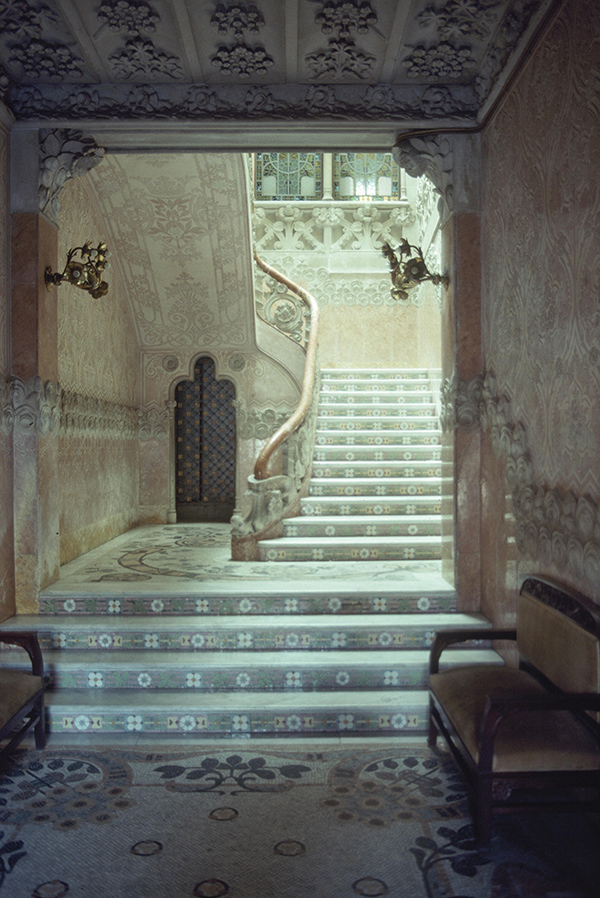
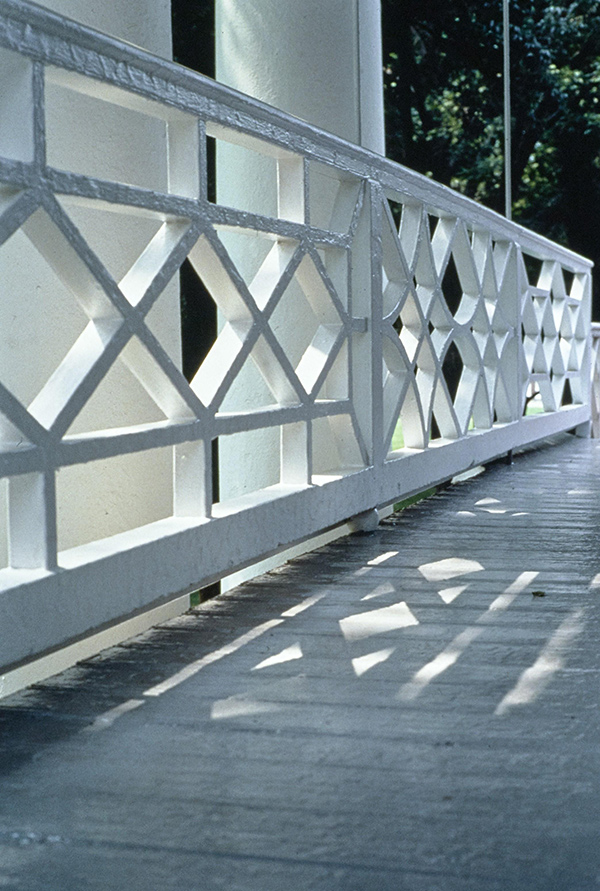
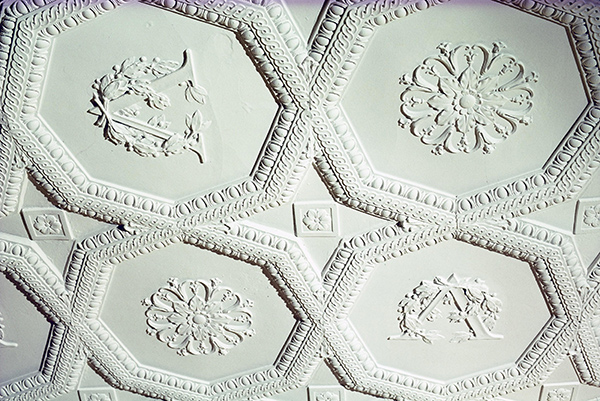
Improving the graduate student experience through assessment
Measuring impact is a critical element of library work, and it often illuminates opportunities for improvement. The Library’s recent Graduate Student Survey is one such example and its findings echo results from the UVA-wide Student Experience in the Research University survey, which focused specifically on the graduate student experience during the COVID-19 pandemic. While the pandemic has been a complicating factor in all realms of graduate student life, it affected Library services a great deal during 2020 and 2021, and the responses in the Graduate Student Survey reflected that.
Three key patterns emerged through the surveys, presented here with representative comments:
First, graduate students wanted better outreach efforts to raise awareness of ways the Library can assist them throughout the course of their education, such as recommending purchases, using interlibrary loan, or engaging with specialty units like the Scholars’ Lab.
“While I know that librarians carry significant expertise in countless areas, I am generally unaware of the ways in which they can help to strengthen my research and teaching. Relatedly, the library could better inform graduate students of its services and opportunities.”
Second, they wanted the Library to provide quiet, flexible spaces for collaboration and study — a particular challenge during the height of the pandemic.
“Increasingly working from home has taught me that I need a separate (reliable) space to write and do research.”
Third, they expressed deep interest in having the Library provide access to a variety of materials including print and electronic monographs, as well as journals, streaming audio and video, data sets, and imagery.
“For me, having access to online resources is the MOST important part of my learning and research processes.”
“The physical collection of UVA Library is of critical importance to my research.”
This type of feedback is essential since it can help reveal hidden needs and, when appropriate, assist the Library in knowing how or when to course-correct. In this case, the feedback offers helpful validation for recent projects, such as recurring semesterly emails to students and instructors; the main library renovation, which will include significantly expanded study space; and intentional spending for collection development, including ongoing work on sustainable scholarship.
Anonymized quotes are from the 2021 Library Graduate Student Survey.
This story originally appeared in the Library’s Annual Report for FY 2022-23. Download the full PDF to read more.
Browse by category
Browse by date
- November 2018 (1)
- August 2019 (1)
- November 2019 (1)
- January 2020 (1)
- November 2020 (1)
- January 2021 (1)
- September 2021 (2)
- October 2021 (1)
- November 2021 (1)
- January 2022 (4)
- February 2022 (2)
- March 2022 (2)
- April 2022 (1)
- May 2022 (3)
- August 2022 (1)
- September 2022 (2)
- November 2022 (4)
- December 2022 (3)
- January 2023 (6)
- February 2023 (9)
- March 2023 (11)
- April 2023 (6)
- May 2023 (4)
- June 2023 (3)
- July 2023 (1)
- August 2023 (3)
- September 2023 (5)
- October 2023 (7)
- November 2023 (3)
- December 2023 (5)
- January 2024 (4)
- February 2024 (8)
- March 2024 (2)
- April 2024 (6)
- May 2024 (4)
- June 2024 (1)
- July 2024 (2)
